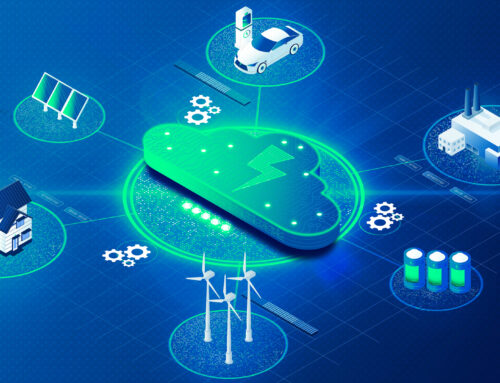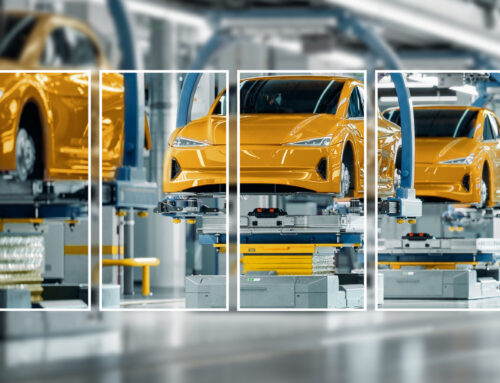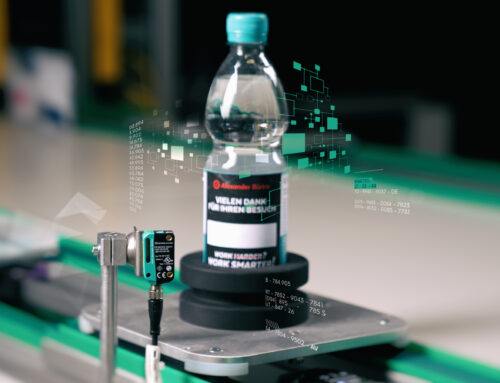August 25, 2019
Networked Down to the Last Few Feet
IO-Link is seen as the enabling technology for Industry 4.0. As the world’s first technology to be both manufacturer-independent and system-independent, IO-Link establishes consistent two-way communication between the control level and the lowest sensor/actuator level—the “last few feet”. Pepperl+Fuchs experts give insights into the versatile opportunities and benefits of the smart interface.

The success of IO-Link is reflected in the increasing number of members of the IO-Link Community, which initiated the communication standard and now has more than 200 members. 'With more than 15 million network nodes in the field, the point-to-point connection has found a permanent place in the industry and is in greater demand than ever before,' says Hartmut Lindenthal. Along with his colleagues at Pepperl+Fuchs, he has been involved with the requirements of IO-Link devices from the start for reliable, bidirectional communication in automation environments.

From Vision to International Industrial Standard
The first efforts toward creating a standard for intelligent sensor/actuator technology took place as part of a manufacturer-independent working group of the PROFINET user organization as early as 2005: 'At that time, we needed to be able to connect conventional and intelligent sensors to a PLC port,' says Lindenthal, recalling the birth of IO-Link. 'However, it still took some time for close and efficient cooperation to develop between the companies.' The IO-Link Community was founded in 2006, sharing the common vision of developing an open, system-independent, and cost-effective I/O technology.
With 40 companies having adopted the standard, numerous masters and devices with IO-Link interface for system specification 1.0 were available on the market by 2009. Two years later, version 1.1 added additional requirements and system functions—including data storage, i.e., parameter alignment between IO-Link master and device. These specifications in turn formed the basis for an international standard, IEC 61131-9. 'Since then, awareness of IO-Link has increased and the number of members of the IO-Link Community has more than tripled,' explains Sonja Armbruster, who is in charge of managing and promoting IO-Link as Product Manager for Industrial Communication at Pepperl+Fuchs.
International Standard
The International Electrotechnical Commission (IEC) has administered IO-Link since 2013 under the IEC 61131-9 standard with the designation Single-drop digital communication interface for small sensors and actuators, SDCI for short.
A Strong Connection
Since the powerful point-to-point connection can be run on a three-wire standard cable, IO-Link provides a backward-compatible interface for binary standard sensors that comes with a whole range of benefits, as Lindenthal confirms: 'The identical wiring means that users can optimize the efficiency of their plants by using a combination of digital and IO-Link signals.' He adds: 'A key advantage here is the fact that IO-Link devices can be easily connected to conventional digital inputs without any additional cabling.'
'It is even easy to integrate a device into an existing network thanks to the standardized device description files,' says Sonja Armbruster, explaining the plug-and-play function of the IO-Link devices: 'The technology was deliberately designed to work completely independently of manufacturers and systems.' Consequently, IO-Link is an ideal basis for countless applications in Industry 4.0.
Transparency for More Data
Nowadays, IO-Link is used as the protocol for the 'last few feet' at the sensor/actuator level in virtually all fields of industry worldwide. Along the way, sensors and actuators have undergone rapid development to no longer transmit data via simple binary and analog standard interfaces: 'Since the end of the 90s, microcontrollers have been installed in sensors as standard,' explains Lindenthal. 'They form the sensors' brain, so to speak.' Equipped with additional device intelligence, IO-Link sensors can store parameters and supply a wide range of additional information—for example, on signal quality and device health—in addition to transmitting measured values and switch points. This creates unprecedented transparency for more data, which allows users to perform comprehensive diagnostics and paves the way for condition-based maintenance—while the system is running, of course.
'All this information for process optimization and targeted maintenance was previously only available to users with higher-value sensor systems in closed fieldbus environments,' explains Lindenthal. 'The fact that all of the requirements for bidirectional communication between the field level and the higher IT network have already been met is another plus for the technology,' he adds.
The Bridge to IT
The data continuity demanded in Industry 4.0 starts with sensor data and extends to intelligent cloud solutions. 'IO-Link field devices can be easily connected to a higher-level IT infrastructure using master modules, such as the multi-protocol and MultiLink-capable fieldbus modules from the ICE series by Pepperl+Fuchs,' explains Armbruster. Since the communication of the IoT protocols (i.e. MQTT, OPC UA) is performed parallel to the fieldbus communication, there is no impact on data exchange at the field level.
Selected sensor data can be interpreted and processed in cloud applications. To make this scenario a reality, a software service could be developed that can be used on various platforms where it takes over the interpretation of sensor data based on the IODD. Consequently, machine specialists could conveniently access machine data, monitor the condition of their plants, and, if necessary, perform maintenance from anywhere via an app, without needing to familiarize themselves with the technical details of the sensors.
'This would significantly simplify the daily work of users,' explains Armbruster with regard to the merits of such a software service, which the Pepperl+Fuchs start-up Neoception could easily develop. 'This corresponds to the predictive maintenance concept across the board, especially when you consider that in the future, meaningful analyses will be as important as the products themselves,' she adds with conviction.

No Longer Dreams for the Future: Safety, JSON, and OPC UA
While the vertical view focuses on cloud integrations and the associated apps, the horizontal view addresses topics such as profile building and specification extension to IO-Link Wireless and Safety.
For example, IO-Link field devices equipped with a safety function will soon be capable of establishing a safe exchange of cyclically transmitted input and output data (process data) and acyclically transmitted diagnostic and parameter information (service data).
At the same time, industrial M2M (machine-to-machine) protocols are increasingly finding their way into the system, as Lindenthal explains: 'One example is the collaboration with the OPC Foundation that has been in place since 2018. One topic addressed by the collaboration is the specification for the mapping of OPC UA for IO-Link.'
'The Community is also working on defining a JSON exchange format to implement lean sensor-to-cloud applications,' says Armbruster regarding future innovations. Hartmut Lindenthal is convinced that the coming years still hold some exciting developments in the field of IO-Link: 'I am sure that the interface will continue to be an essential element of Industry 4.0 solutions in the future and that users from the automation industry will increasingly benefit from the various opportunities the system provides.'
Electronic Device Description (IODD)
Due to their communication capabilities, the devices offer a wide variety of functions with the associated adjustment options and status information.
The IODD format, short for IO Device Description, was defined as a standard description language to display this data and information in a user-friendly manner and to simplify operation. This description includes details of the parameter structure and value ranges, in addition to information about supported product versions. Each IO-Link device has an IODD that can be interpreted and displayed on all IO-Link-enabled system environments. Accordingly, all IO-Link devices can be operated independently of all systems.





